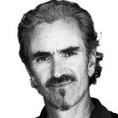We all encounter mild culture shocks when we venture outside our domain. There is usually nothing too alarming, just some subtle idiosyncrasies that remind us that we are a long way from home.
This is how it is for many of the PGA Tour players in America; they traverse their vast land, experiencing marginal distinctions from state to state but on the whole they play a similar type of golf week by week, with the only variation being the location.
So when the world’s best golfers assembled on the East Lothian coast for the preamble to the 142nd Open Championship on Monday they were faced with a definite change in scene with their living quarters but more shockingly, the presentation of the parched summer’s links land as Muirfield presented more of a mental challenge.
They were facing a true golfing culture shock.
Aside from the rare inconvenience of jet-lag, warm drinks and a dearth of air-conditioning the unsuspecting US Tour player has to contend with a course that looks like it has been deprived of moisture for much of its long and distinguished lifetime.
The wind blew pretty stiffly earlier in the week, which has made the links an even more daunting challenge.
Jack Nicklaus is credited with introducing yardage to the modern professional game and it was on the 15th where he drove the green with a persimmon wood and a small Pinnacle golf ball during the 1959 Walker Cup.
Naturally, the course was running as hard and fast as it is this week but it is a testament to the Golden Bear’s strength and ability to control his ball flight in what would have been standard links wind conditions that he could drive a 360-yard par four without much wind assistance.
What Jack did was take the guess work out of the skilled golfer's decision-making by always knowing the distance left to the hole instead of relying on his depth perception, using his eyes and drawing on calculated guess work in figuring out how far he had left to the hole.
Detailed yardage book
We have gone from having to pace a course as caddies and making very raw distance charts to having lasers, altimeters and compasses supplied to us on top of a very detailed yardage book with which to furnish our players with accurate numbers.
This week we have been spoon-fed by the R &A with free yardage books and complementary yardage book covers in which to stash them.
The sprinklers on the course even have yards and metres numbers clearly written on them to the front of each green.
It has never been easier for the caddie to provide accurate distances for his precise player.
The only problem is the numbers this week are only a very rough indication to a player, given the unyielding nature of the thirsty links.
A modern professional would, on average, hit his seven-iron 170 yards. This means the ball will travel that distance through the air and given the nature of most courses these days you only have to be concerned with the ball spinning back too much rather than releasing forward.
This is due to the quality of the players’ ball-striking, the technology of the ball and the club with which he hits it.
To give you a direct example, on the fourth hole in Muirfield on Tuesday during a practice round with my player Ernie Els, Henrik Stenson , Branden Grace and Nick Faldo, my player’s seven-iron came to a gradual halt 225 yards from where he teed it up with a slight breeze assisting.
Nicklaus needs to invent another system for a hard bounding links course in July in Scotland set up to host the Open Championship, because the old numbers are making no sense.
Three-iron
Then, on a hole back into the wind with a bunker 260 yards down the fairway which you are trying to keep short of, you can only really hit a three-iron with any certainty of staying short of it.
Such is the never ending roll on the fairways. The numbers are more predictable when hit off a tee or off the short grass.
If you hit your ball in the first cut of rough, with its slightly longer wispy grass, the chances of it stopping anywhere near the pin on the green are remote, given the putting surfaces are more like your west-facing patio at home during a heatwave.
My point being this is going to be the toughest test of golf most of these hopeful US touring pros are going to have faced in their young lives. Their ability to adapt is going to be tested to the full this week on Muirfield.
Faldo mentioned he played with a persimmondriver when he won in 1992. There was much more cause for using a driver back then, even if the conditions were mildly fiery, because of the equipment. I could even see the two-time Muirfield Open victor competing with the course playing as fast as it is this week. It is rife for another Tom Watson scare in Turnberry four years ago where again length was not at a premium.
If you look at the past winners at this venue from Watson and Faldo to Els, ball-striking, patience and discipline are the qualities they possess and this year’s champion must adopt these qualities to prevail this week.
There are no tricks to Muirfield, just simple questions of accuracy and understanding of how to play golf by the seaside in the summer-time in Britain.
So on top of the mild inconveniences of having to cross the Atlantic for a week of what must seem like crazy golf, warm sodas and a night’s slumber in a small, stuffy and slightly odorous hotel room, the 142nd Open Champion is going to be a master strategist with a summer’s supply of patience.












